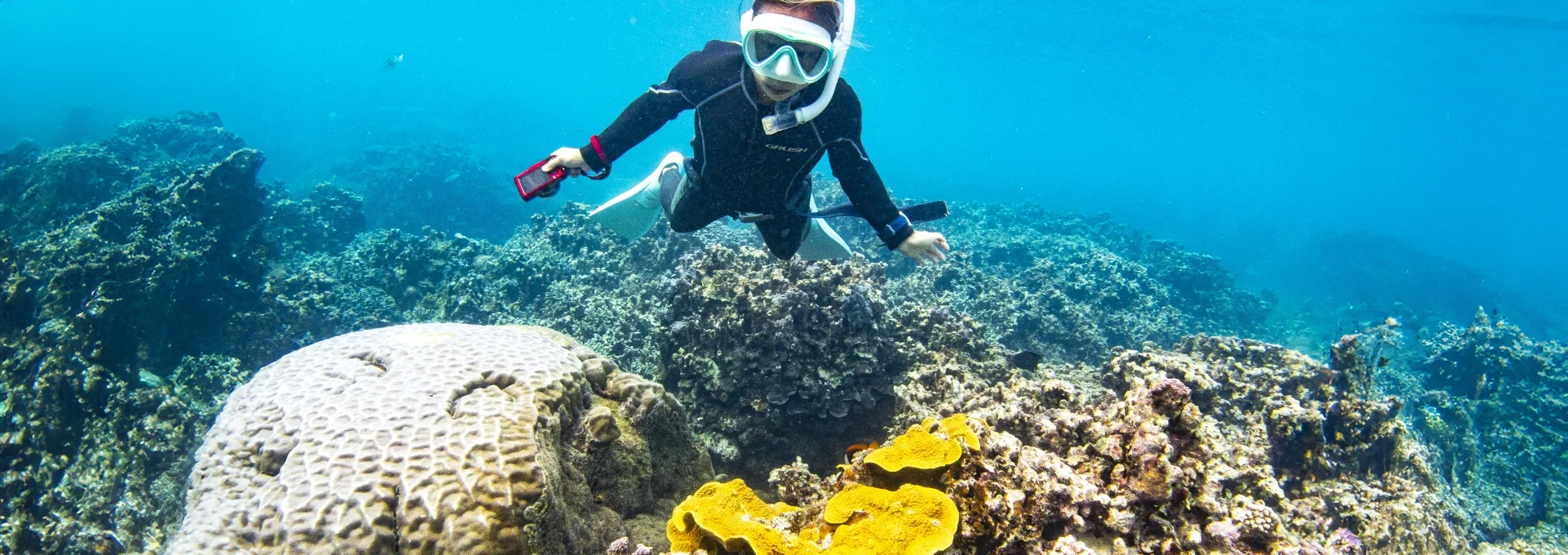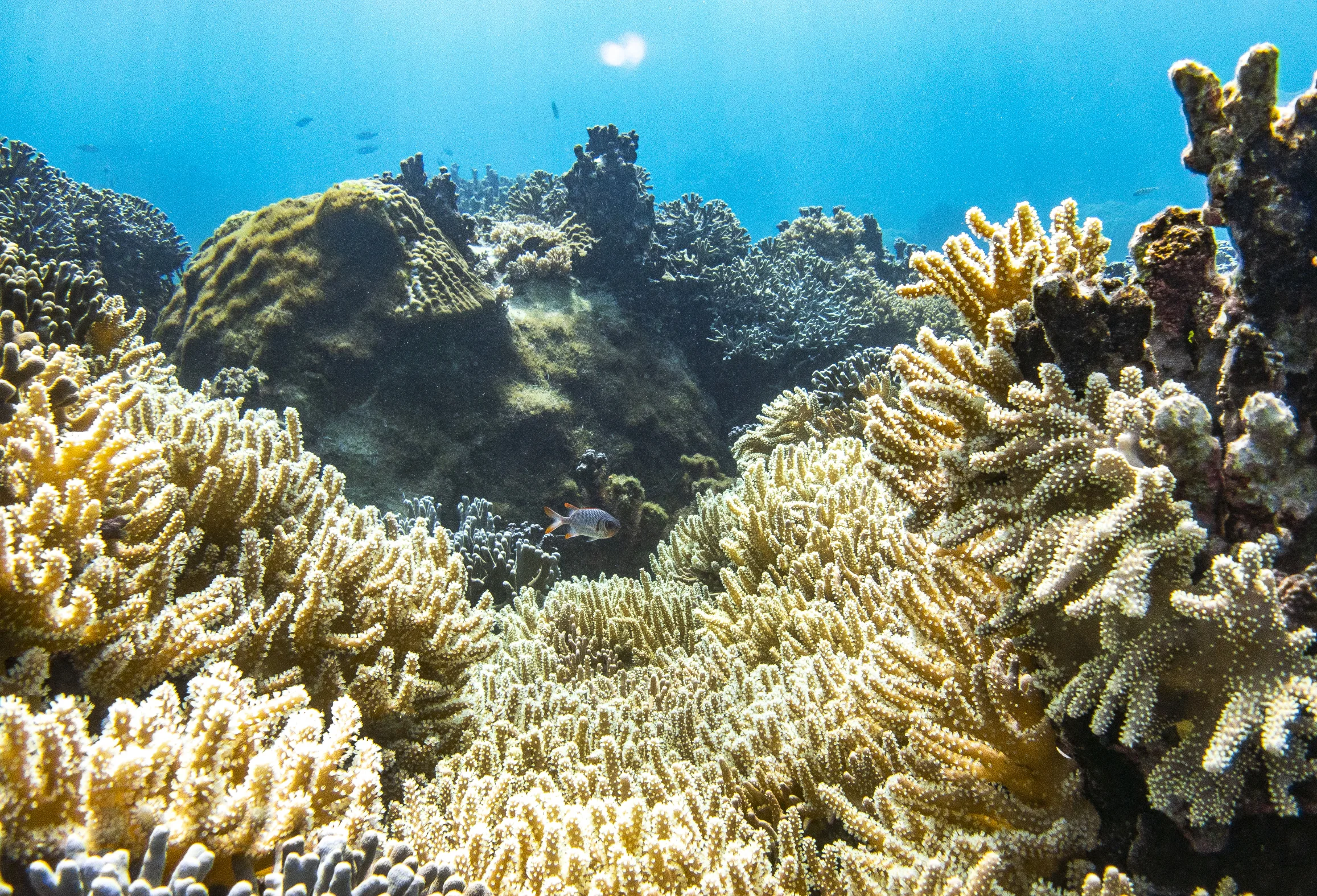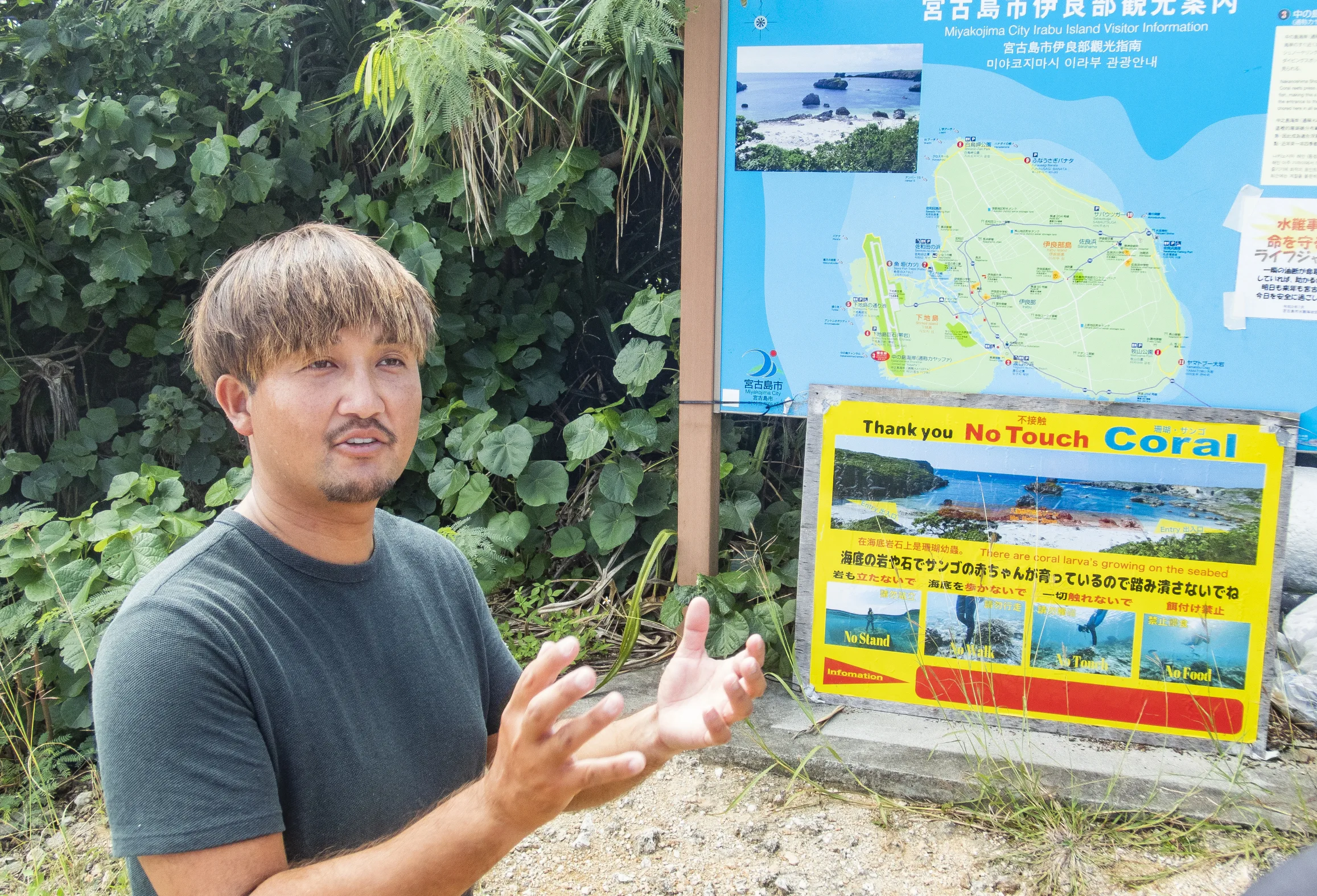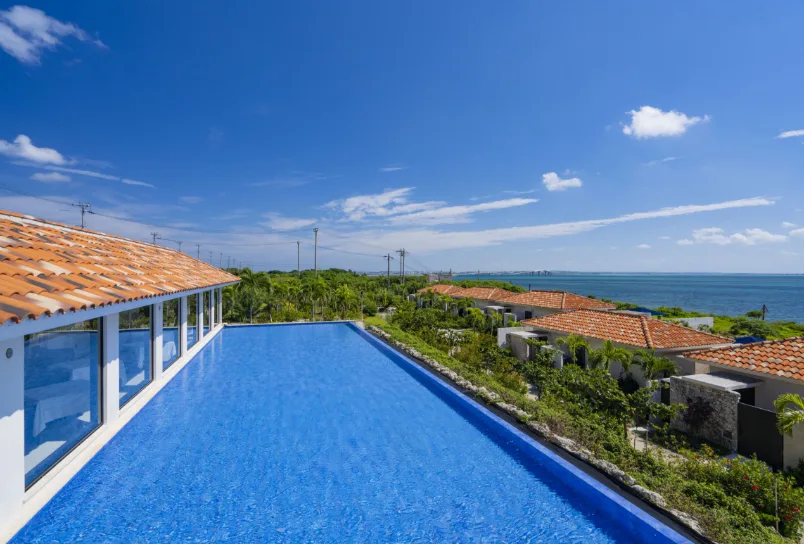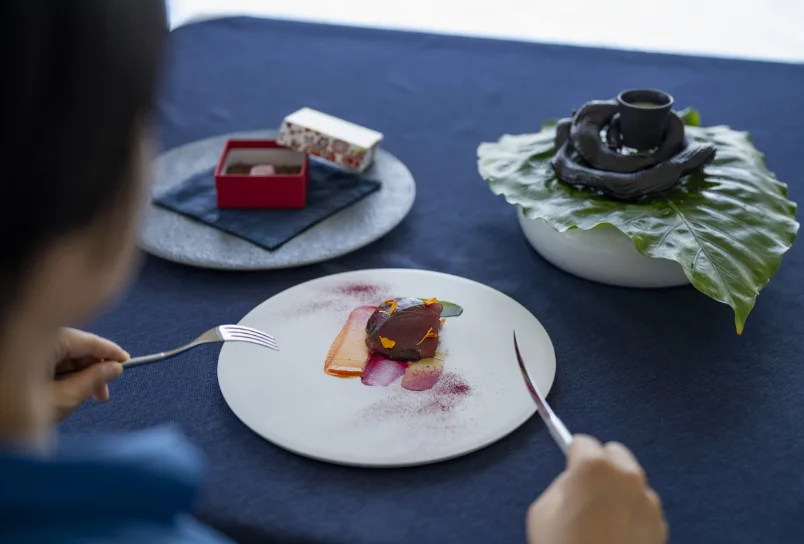Blue Islands Aiming for a Green Future
If it is stunning sea views above and below the water you seek, you need to look no further than the Miyako Island Region. Only a 50-minute plane ride south of Okinawa’s capital Naha, this collection of eight islands are centered on the main island of Miyakojima.
There are no rivers or mountain ranges on the islands, making for stunningly clear coastal waters highlighted by vivid gradients of blue, commonly referred to as Miyako Blue. White sand beaches are numerous and include the iconic Yonaha Maehama beach, considered the most beautiful beach Japan. Surrounded by coral, the islands are also home to Yabiji the largest coral reef in the nation, encompassing over 100 separate coral reefs and covering an area of 17 by 6.5 kilometers. Yabiji hosts a wide variety of coral and is dense with sea life, and the reefs are shallow, which makes for excellent snorkeling.
Beyond the natural beauty, there is a great deal of pride in the islands’ rich culture and much of this has been preserved. One eye-catching cultural practice still alive on the island is the Paantu Punaha. Held in Early October, it is an ancient ceremony to drive out evil spirits from the village of Shimajiri. Three young men from the village wrap vines and leaves around themselves and lather dark, smelly mud from a sacred pit all over their bodies. Holding scary masks, they move around the village smearing mud on people they come across. It is believed that good fortune will come to the recipients of a mud swipe, and if you have just built a house or had a child, you are almost guaranteed a visit from these muddy exorcists. It is quite an experience to see a ceremony in action, but visitors are advised to maintain a respectful distance and be sure to wear clothes suitable for a few smelly mud stains.
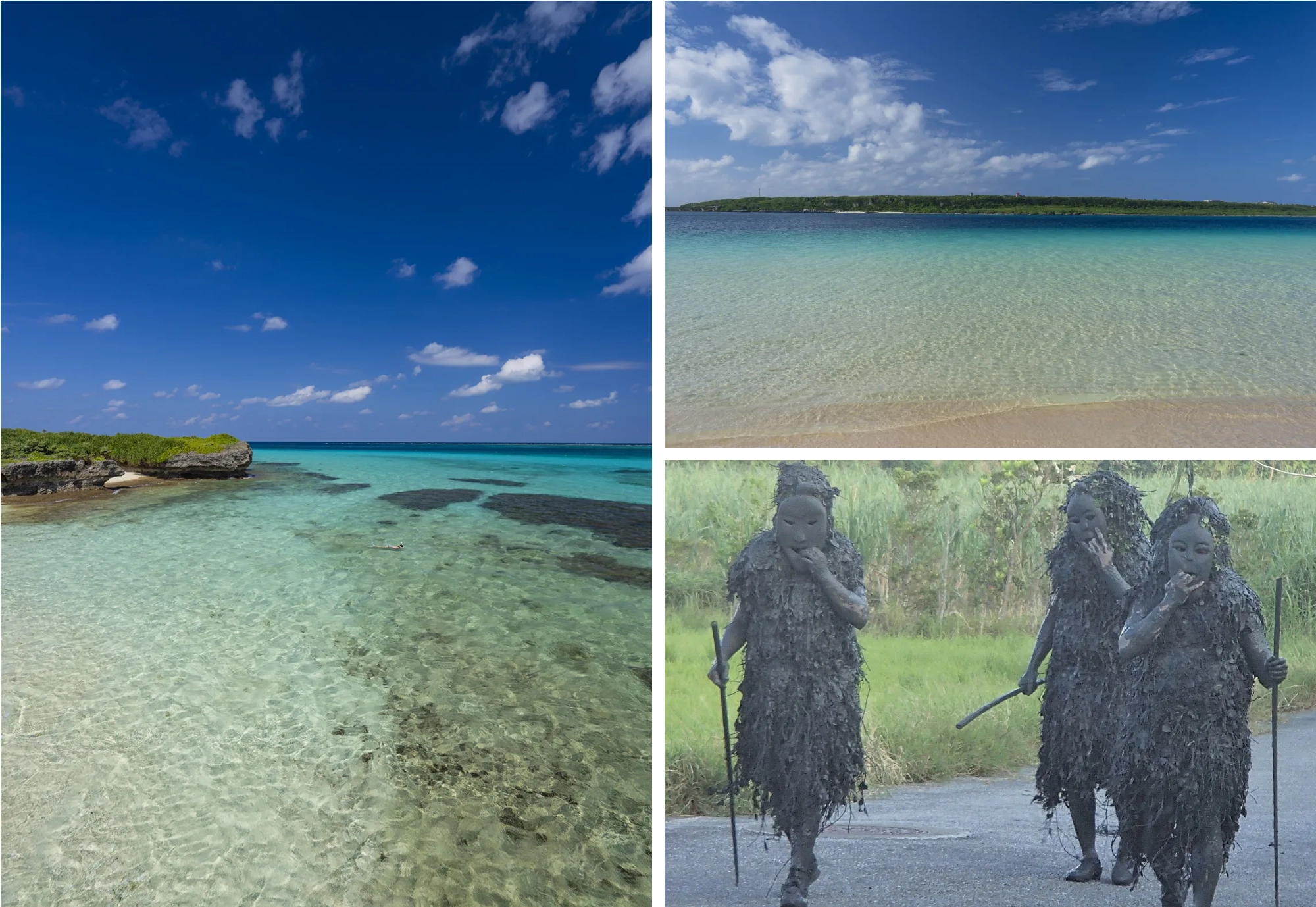
Given the islands are regularly visited by strong typhoons, and are naturally susceptible to water shortages, Miyakojima is vulnerable to climate change.Consequently, the local government has made it a priority to preserve the islands’ beauty by creating an environmentally sustainable future. A landmark in this journey took place in 2018 with the Declaration of Eco Island Miyakojima 2.0, which presents a vision of the island’s sustainable environment 1000 years into the future—a place with abundant water resources, well-preserved coral and rich biodiversity. The plan is designed as a wide-ranging update for the island, its transport, housing, and energy infrastructure, all of which will be environmentally sustainable and networked to create smart communities.
As the 2.0 in the name would suggest, this is not the first time the Miyakojima government has mapped out a path to sustainability. However, residents previously found it challenging to grasp the concept and how to participate. The 2.0 version of Eco Island encourages both residents and visitors to create the islands’ sustainable future. In 2019 they introduced an “ideal” currency, the MYAHK. People can earn MYAHK by participating in environmentally-sustainable activities such as beach cleaning, and use this local currency for purchases and discounts at sustainably-oriented businesses around the island. Full of ideas for sustainability action, the recently released Miyakojima Eco Passport is a handy pocket-sized summary of what it takes to be a responsible and ethical visitor to the islands.
KONPEKI the villa suite Go To webpage
This luxury villa complex located just after crossing the scenic Irabu Bridge is the height of luxury and privacy. Each of the eight villas has its own pool overlooking an impressive seaview, and there is easy access to the beach below. The staff’s hospitality is exceptional, and the food outstanding. KONPEKI boasts a unique fusion of French cooking and a revitalized "Ryukyu Gastronomy," which is based on the Ryukyu Kingdom’s food culture. Some of the dishes, such as the smoked sea snake soup from Kudaka Island, can only be enjoyed here.

